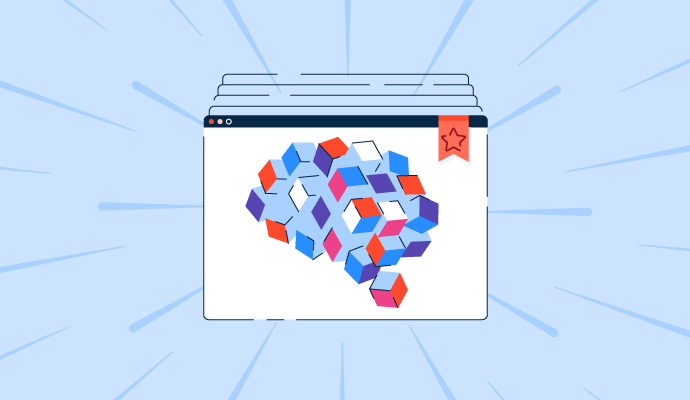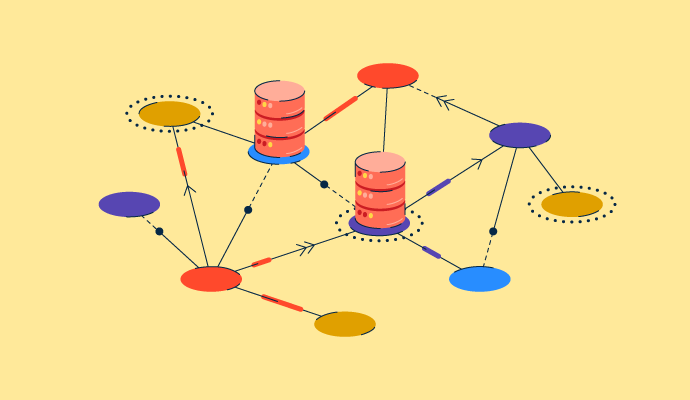What is a vector database?
Vector database is a type of database used to store, manage and query vector embeddings in machine learning and artificial intelligence applications.
Vector databases are integral to recommendation systems in many content management applications. They aid in efficient similarity searches and the quick retrieval of relevant data points. By utilizing advanced indexing techniques and similarity search algorithms, vector database software enables the retrieval of similar vectors, facilitating real-time processing and decision-making.
Vector databases integrate seamlessly with machine learning frameworks, support horizontal scaling, and offer robust security and access controls. They are essential for optimizing performance, scalability, and accuracy in data-driven applications.
Types of vector database
Depending on the architecture, indexing methods, and vector types being handled, vector databases can be categorized into the following types.
- Standalone vector database: These are vector databases designed for storing, managing, and querying vector embedding without the need for additional traditional database systems. They are optimized for high-performance similarity search, advanced indexing methods, and efficient storage of high-dimensional vectors.
- Cloud-based vector database: This is a managed service hosted in the cloud that stores, manages, and queries vector embeddings. Their features include pay-as-you-go pricing, seamless integration with other cloud services, and support for large-scale data processing.
- Vector libraries with traditional databases: These integrate vector search capabilities with existing relational or NoSQL databases. The vector libraries support mixed data types, flexible querying, and advanced indexing techniques for both structured and unstructured data.
Benefits of using a vector database
A vector database offers significant advantages in handling and querying vector data. Here are some of the key benefits of using a vector database.
- Similarity search: Vector databases are optimized to retrieve similar vectors, providing relevant results for similarity searches.
- Scalability: Vector databases help handle large datasets while maintaining high performance. Scalability is one of the main benefits, as these databases are designed to scale horizontally to handle increased data loads and query demands effectively.
- Better machine learning and AI integration: Vector databases support real-time inference and decision-making, which is essential for recommendation systems and fraud detection. They also integrate with machine learning models easily.
- Efficient indexing: Vector databases offer customizable indexing options, optimizing different data types and query requirements. Using various distance metrics, these databases facilitate efficient similarity searches.
- Enhanced data management: Vector databases manage both vector data and traditional data within the same system. They provide query languages and APIs for complex vector-based operations.
Vector database best practices
To effectively use vector databases, companies should follow these best practices:
- Choose the right vector database: Choosing a database that supports the application's feature requirements will ensure it has strong community support and comprehensive documentation.
- Data preparation: It is vital to ensure that the vectors generated by the machine learning models are high-quality since model training is important for generating meaningful embeddings.
- Indexing strategies: The right indexing method should be selected depending on the use case since different methods offer varying strengths and trade-offs in terms of storage requirements and query complexity. Moreover, index parameter tuning is essential to balance between search accuracy and speed as per the application needs.
- Query optimization: To better utilize system resources, it is advisable to batch queries together.
- Scalability and performance: Designing the system to scale horizontally helps in handling increased loads. Thus, choosing a vector database that supports distributed architecture is necessary.
- Monitoring and maintenance: It is essential to monitor the performance of vector databases at regular intervals by using metrics such as query latency and index build times. Automated backup strategies can help prevent data loss and enable quick recovery. Additionally, rebuilding the index periodically can help optimize performance.
- Security and access control: Ensure encryption is always used for data at rest and in transit. Use fine-grained access control policies to restrict access to databases.
- Testing and validation: Thoroughly test the vector database setup with real-world data and queries to validate performance. Regularly verify the results of similarity searches.

Shalaka Joshi
Shalaka is a Senior Research Analyst at G2, with a focus on data and design. Prior to joining G2, she has worked as a merchandiser in the apparel industry and also had a stint as a content writer. She loves reading and writing in her leisure.

